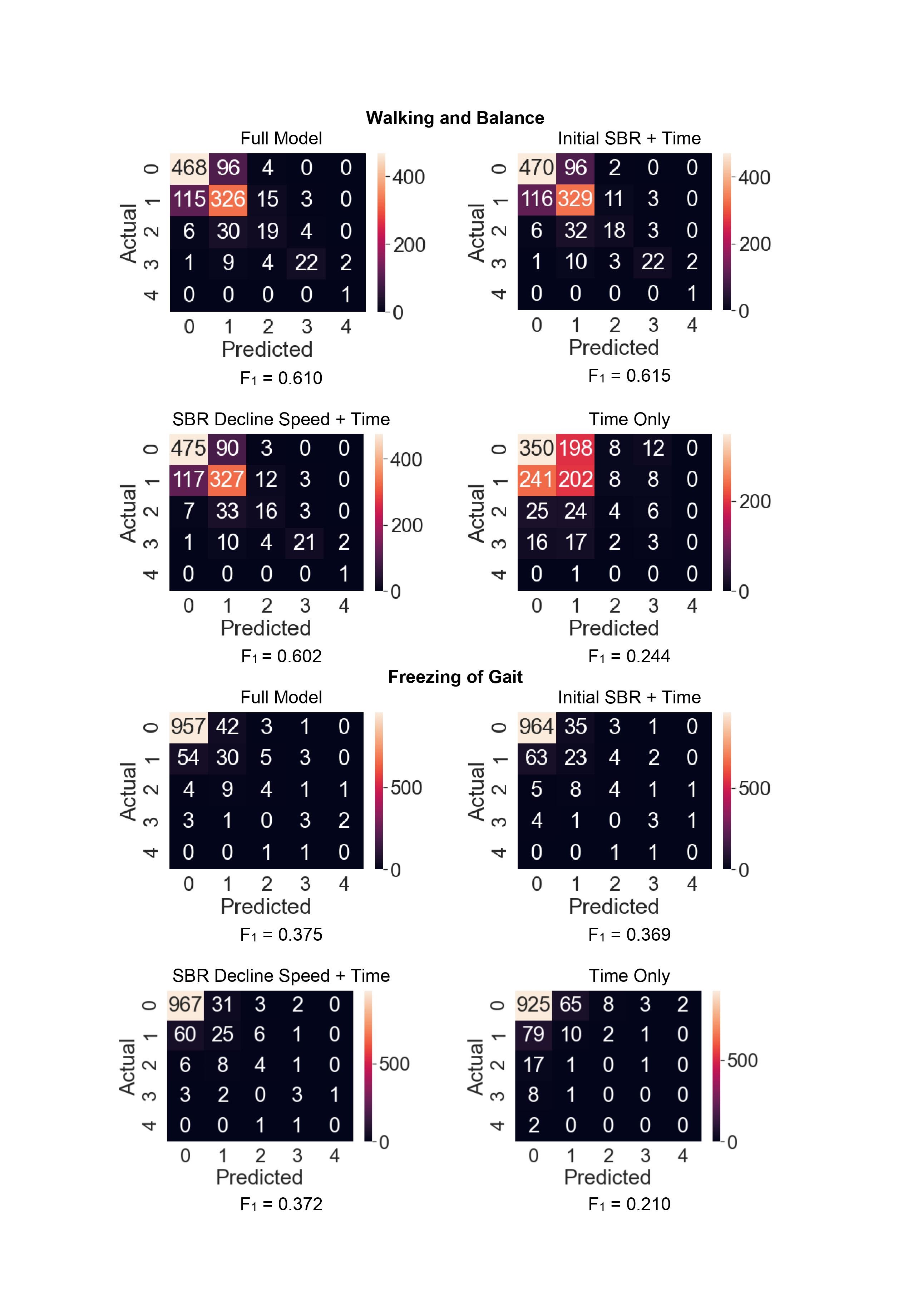Category: Parkinson's Disease: Neuroimaging
Objective: We aimed to assess the usefulness of dopamine binding scores as predictors of walking and balance problems and freezing of gait (FoG) in PD.
Background: While dopaminergic degeneration is a hallmark of PD, axial symptoms respond poorly to dopaminergic therapy and they represent a major cause of morbidity and mortality in PD, so to predict risk of reaching disability milestones due to axial symptoms in PD is relevant to prevention of this morbidity and mortality. A strong model would allow clinicians to predict future outcomes given only early SBR data.
Method: Dopamine Transporter (DaT)-Single Photon Emission Computed Tomography (SPECT) Striatal Binding Ratio (SBR) and MDS-UPDRS longitudinal data from 244 PD patients were obtained from the PPMI database. Random forest models were created using Python to assess the relationship between SBR and walking and balance (MDS-UPDRS 2.12) and FoG (MDS-UPDRS 2.13). Correlation matrices and macro F1 scores were then generated. Predictor variables were initial SBR values for the right and left caudate and putamen, and SBR speed of decline, defined as difference between first and second DaTScan divided by months in between. Response variables were scores for MDS-UPDRS sections 2.12 and 2.13.
Results: [figure1]
F1 scores were higher overall in models predicting walking and balance difficulties compared to FoG. The increase in F1 scores in models containing SBR as predictors as opposed to time alone was much greater in the models predicting walking and balance problems as opposed to FoG. There was not a significant difference in the performance of models containing both initial SBR and SBR decline speed, and either initial SBR or SBR decline speed alone.
Conclusion: We predicted axial deficits in PD patients with moderate success. While SBR was clearly shown to be helpful in predicting general walking and balance difficulties as opposed to time alone, such prediction was not replicated when predicting FoG, with poor performance overall. It is important to note that most subjects included in this analysis had no FoG, while a significant number experienced at least mild walking and balance difficulties. Our model may improve if the sample size for FoG were larger. These results may indicate that dopamine may not be the neurotransmitter most strongly associated with FoG in PD patients, at least in this disease stage, or that SBR is not the tool to assess for such milestones.
To cite this abstract in AMA style:
J. Li, N. Phielipp. Dopaminergic Denervation as Predictors of Axial Dysfunction in Parkinson’s Disease [abstract]. Mov Disord. 2022; 37 (suppl 2). https://www.mdsabstracts.org/abstract/dopaminergic-denervation-as-predictors-of-axial-dysfunction-in-parkinsons-disease/. Accessed December 14, 2025.« Back to 2022 International Congress
MDS Abstracts - https://www.mdsabstracts.org/abstract/dopaminergic-denervation-as-predictors-of-axial-dysfunction-in-parkinsons-disease/

